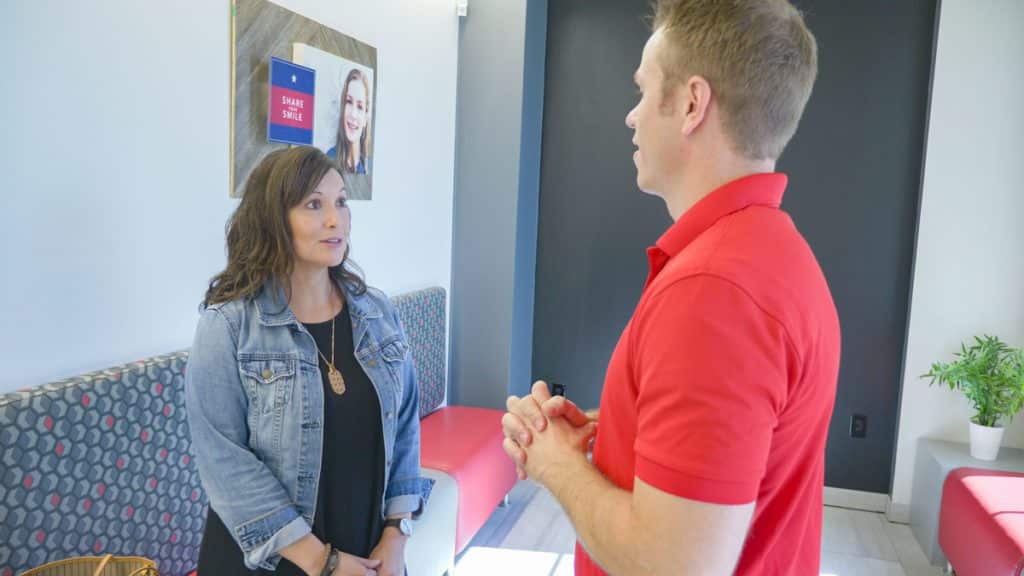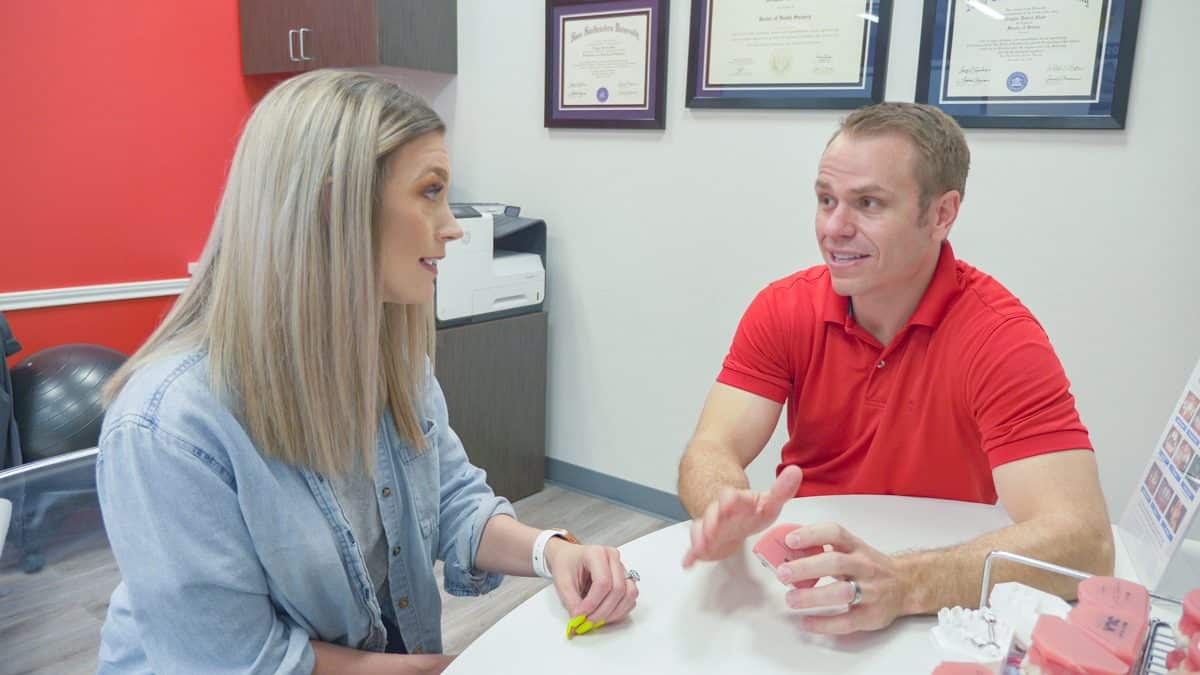Today’s orthodontic patients have more treatment options available to them than ever before. One of those options tends to be lesser known than some of the others, even though it has practical and cosmetic advantages over traditional braces or clear aligners. Shaw Orthodontics is proud to offer lingual braces to patients who are looking to straighten their smile without anyone knowing! These braces are installed on the back of the teeth rather than the front, making them virtually invisible. Let’s take a look at how they work, who’s a good fit for them, and everything else you need to know about lingual braces!
What are lingual braces?
Lingual braces are similar to traditional braces in several ways. For instance, both have brackets attached to the surface of the teeth, and both use wires and rubber bands to exert gentle pressure that slowly moves your teeth and jaws into more desirable positions. However, the brackets used with lingual braces are placed on the back of the teeth facing the tongue, rather than the front. This makes them virtually invisible, which can be especially compelling for teens and adults who are image-conscious!
How do lingual braces work?
Before lingual braces are placed, we will use a scanner to take a digital impression of your teeth so we can personalize the brackets to fit your mouth perfectly. Dr. Shaw and Dr. Rasmussen will place brackets on the back of your teeth, then connect them with a wire that will be mechanically customized to exactly fit the contours of your mouth and accurately exert the pressure and torque needed to move your teeth.
It’s essential to have the perfect fit from the very start when it comes to putting lingual braces on. With traditional braces, standardized brackets are placed one at a time on each individual tooth, but to properly position lingual braces, we use a customized tray that allows us to cement all the brackets to the teeth at the same time. Once the lingual braces are placed, they work just like traditional braces to gently move your teeth into their desired positions over time.

Pros and cons of lingual braces
Most patients who are drawn to lingual braces love how discreet they are! For adult patients especially, metal braces are not ideal in professional or social situations. Lingual braces have all the benefits of traditional braces, but move your teeth without being so apparent!
When it comes to treating most common orthodontic issues, particularly mild to moderate cases, lingual braces can be just as effective as other treatment options. However, lingual braces aren’t the best fit for everyone. During your FREE consultation with us, Dr. Shaw and Dr. Rasmussen will be able to tell if you are a good fit for lingual braces after a thorough examination.
Since having braces on the back of the teeth can take some getting used to, lingual braces may slightly interfere with your speech, especially in the beginning of your treatment! Patients may have a slight lisp until they become accustomed to the brackets due to the contact the tongue makes with the back of the teeth when you speak. You’ll overcome this effect quickly, and get back to sounding totally normal before you know it.
As with traditional braces, some slight discomfort or soreness may occur from time to time. When wearing lingual braces, this is most commonly felt on the tongue, particularly when eating or speaking. This pain and irritation will decrease the longer you wear your braces.
Are lingual braces right for you?
As with any orthodontic option, you’ll need to consider your own personal preferences and what treatment method is likely to work best with your lifestyle. Lingual braces have food restrictions just like traditional braces, so you’ll need to avoid anything that’s hard, cruncy, or sticky during the treatment process. If food gets stuck in your braces, it can take extra effort to remove it and get the area really clean. Lingual braces also tend to be more expensive than traditional braces because they require such fastidious customization. Other braces have a more standardized fit, so you may find they are more affordable.
There’s no “one size fits all” answer for how long a patient will need to wear lingual braces. Somewhere around 12-24 months is common, though tougher cases may take more time to see results, which is comparable to traditional braces. Regular visits every few months will be necessary to perform adjustments and check that the orthodontic process is progressing on schedule.

Say hello to your new smile with Shaw Orthodontics
If you’re looking for an alternative to traditional braces, lingual braces can be a great option for improving your oral health and giving you a straighter smile!
If you’re in the Rockwall or Watauga area and are ready to learn more about how lingual braces can give you the smile you’ve always wanted, schedule your FREE consultation today! Dr. Shaw and Dr. Rasmussen will work with you to help you find the best treatment for your needs, wants, and lifestyle.

